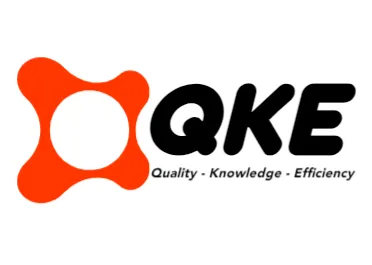To track and trace a Bill of Lading step by step, one must first obtain the unique tracking ID, such as the Bill of Lading number, container number, or booking reference. Next, access the carrier’s or a third-party tracking platform online. Enter the ID into the designated field to view the shipment status, including location and ETA. Updates are available 24/7 on most platforms. Explore further to uncover advanced tracking tools and methods.
Key Takeaways
- Obtain your Bill of Lading number, container number, or booking reference for tracking.
- Visit the carrier’s website or a third-party tracking platform.
- Enter the tracking ID in the designated input field.
- View detailed shipment status, including location and estimated arrival time.
- Use platform features for real-time updates and easy navigation.
Understanding the Basics of Bill of Lading Tracking
A Bill of Lading (BoL) is a critical legal document in global trade, issued by a carrier to a shipper, serving as a receipt for shipped goods, a contract of carriage, and, in some cases, proof of ownership. Its role in logistics dates back centuries, with BoL History tracing origins to medieval trade as a means to document cargo. Today, it remains indispensable for facilitating the movement of goods across borders. By providing a clear record of terms and conditions, it ensures accountability among shippers, carriers, and consignees during transit ensures accountability among parties.
In modern supply chains, BoL tracking is vital for monitoring shipment progress, enhancing visibility, and ensuring transparency. It allows stakeholders to manage timelines and address issues proactively. However, Tracking Myths persist, such as the belief that BoL tracking always guarantees real-time precision, when in fact, delays in data updates can occur. Understanding these basics clarifies the document’s purpose and the importance of reliable systems to oversee goods from origin to destination efficiently.
Essential Information Needed for Tracking
Tracking a Bill of Lading effectively hinges on gathering precise and comprehensive data related to the shipment. This process requires specific identifiers and details to ensure accuracy in monitoring cargo movement. Core elements include the Bill of Lading number, a unique identifier for the shipment, and the container number, critical for physical location tracking. Additionally, shipment specifics provide necessary context for verification during transit.
Tracking a Bill of Lading demands precise data and identifiers to ensure accurate cargo monitoring and verification throughout the shipment process.
Key data points to compile include:
- Core Identifiers: The Bill of Lading number, container number, and booking number serve as primary keys for tracking systems.
- Shipment Details: Cargo Description, detailing type and quantity, ensures content verification, while Weight Verification via gross weight confirms transport planning data.
- Logistical Information: Vessel name, voyage number, and port details (loading and discharge) pinpoint the shipment’s journey milestones.
Equipped with this information, stakeholders can accurately monitor shipments and address discrepancies promptly during transit.
Different Methods to Monitor Your Shipment

Navigating the complexities of shipment monitoring requires understanding the diverse methods available to stakeholders. One approach involves direct carrier communication, leveraging Phone Support for immediate updates or Email Followup for detailed inquiries, especially in urgent situations like delivery rescheduling. This method often requires a tracking number to access specific shipment data through customer service or automated systems.
Another option is utilizing third-party tracking platforms, which aggregate data from multiple carriers into a unified dashboard, offering features like automated alerts and analytics. Mobile applications, both carrier-specific and third-party, provide on-the-go status updates and push notifications for real-time visibility. Additionally, API integration enables businesses to embed tracking data into their systems for automated, scalable monitoring. Lastly, freight forwarder and 3PL systems offer centralized platforms with client portals and IoT-driven real-time tracking, ensuring end-to-end visibility. These methods collectively empower stakeholders to efficiently oversee shipments with precision and adaptability.
Step-by-Step Guide to Online Tracking
How can one effectively monitor a shipment using online tools? Online tracking offers a streamlined way to oversee a Bill of Lading (BOL) with precision, leveraging user-friendly platforms designed for Navigation Ease and intuitive Interface Design. Individuals can access real-time updates by following a structured process on carrier or third-party tracking websites.
To ensure accurate tracking, consider these essential steps:
- Obtain Tracking IDs: Secure the BOL number, container number, or booking reference from shipping documents for quick input.
- Access the Platform: Visit the carrier’s website or a third-party tool, navigating to the tracking section with ease due to clear Interface Design.
- Enter and Review Data: Input the tracking ID, verify its accuracy, and view detailed shipment status, including location and ETA.
This method, supported by 24/7 access and efficient Navigation Ease, empowers users to monitor shipments seamlessly through well-structured digital interfaces.
Leveraging Advanced Tools for Enhanced Visibility

Modern supply chain management benefits significantly from advanced tools that elevate the visibility of shipments beyond basic online tracking. Real-time tracking platforms and APIs integrate with ERP and TMS systems, delivering live updates on container location, status, and vessel details across 180+ carriers. Customizable alerts via webhooks enable proactive management of delays and events.
Further enhancing visibility, IoT Integration employs GPS and sensor devices on containers to monitor location, temperature, and humidity in real-time via cellular or satellite networks, crucial for sensitive cargo like pharmaceuticals. Meanwhile, Blockchain Applications secure Bills of Lading through immutable digital ledgers, ensuring transparency, reducing paperwork, and enabling smart contracts for automated processes. AI and machine learning add predictive insights, improving ETA accuracy and optimizing routes. Integrated visibility platforms consolidate data from multiple sources into a single dashboard, offering end-to-end oversight across transport modes and stakeholders for streamlined operations.

 Tiếng Việt
Tiếng Việt 日本語
日本語 中文 (中国)
中文 (中国) 한국어
한국어